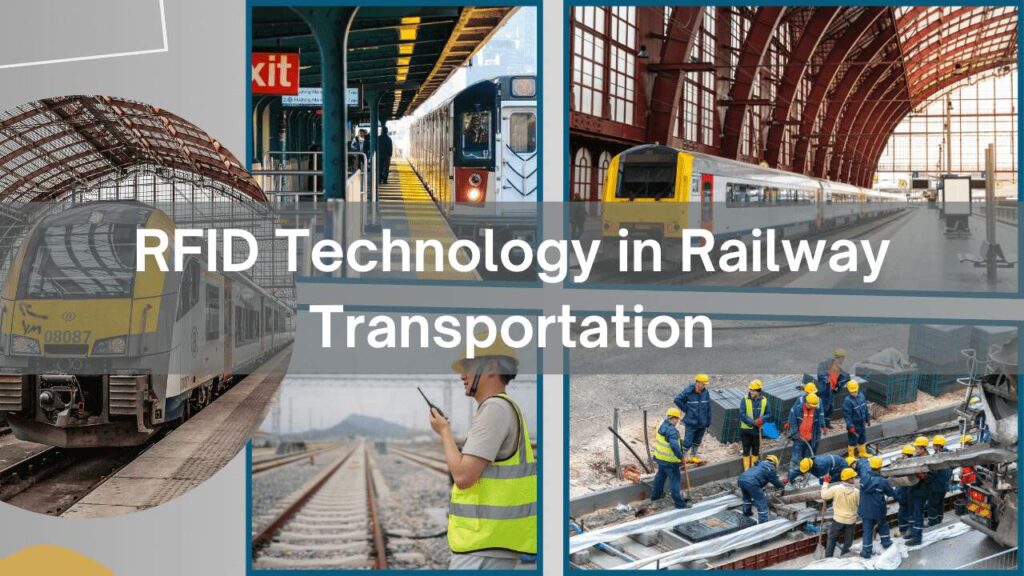RFID Makes Medical Supply Chain “Think”

RFID Makes Medical Supply Chain “Think” RFID Makes Healthcare Supply Chains “Think”: Global Pioneering Cases Revealed and Practical Guide Facebook LinkedIn WhatsApp RFID Makes Healthcare Supply Chains “Think”: Global Pioneering Cases Revealed and Practical Guide In today’s healthcare and dental supply chain sectors, speed and precision determine the baseline of service—digitalization and intelligence have become irreversible industry trends. If you’re still struggling with time-consuming inventory counts, unclear logistics data, and complex high-value consumables management, it’s time to equip your supply chain with the “eye of wisdom” using RFID. This is not just a “tool upgrade,” but a comprehensive innovation in management thinking, operational processes, and industry standards. This article will, in an accessible way, help you understand how RFID disrupts traditions, enables innovation, and through real
How Simplify Industrial Tracking and Supply Chain Management

How Simplify Industrial Tracking and Supply Chain Management RFID Tags: The New Engine of Industrial Intelligence Upgrade — From Cast Part Tracking to End-to-End Supply Chain Transparency Facebook LinkedIn WhatsApp RFID Tags: The New Engine of Industrial Intelligence Upgrade — From Cast Part Tracking to End-to-End Supply Chain Transparency Global manufacturing is undergoing a profound transformation—what we commonly refer to as “Industry 4.0.” Achieving more intelligent, transparent, efficient, and traceable production is now essential for manufacturers seeking to upgrade and compete globally. RFID (Radio Frequency Identification) technology, and particularly the ubiquitous RFID tag, is emerging as a key driving force in this revolution. As a professional company specializing in RFID tag design solution, we value not only the craftsmanship and performance of our products, but also their immense practical value in diverse industrial scenarios. Today, using “tracking of cast part proces
Higher Labor Costs, Higher RFID Adoption Rate?

Higher Labor Costs, Higher RFID Adoption Rate? The Engine of Transformation in a High-Cost Era: RFID’s Logic, Global Cases, and Industry Opportunities — Your Next Operational Upgrade Revolution Starts Now with a Tiny RFID Tag Facebook LinkedIn WhatsApp “People are the most expensive resource.” This is a statement no business leader would disagree with. Yet, what we are witnessing is a major trend: labor costs are continually rising worldwide, management is becoming increasingly complex, while enterprises demand ever-higher levels of process transparency, precise operations, and asset security. How can we break through these challenges and embrace a new, efficient, traceable, and automated way of working? The answer lies in a rapidly growing technology – RFID (Radio Frequency Identification). Through this article, we aim to help global business owners, industrial managers, and innovation leaders truly understand why RFID has become the “new standard”
What drives RFID adoption in crane equipment?

What drives RFID adoption in crane equipment? Empowering the Lifting Equipment Industry with RFID: How Tiger Lifting Sets a New Standard for Smart Manufacturing In today’s rapidly advancing technological era, relying solely on robust products is no longer enough for companies to stand out in the fiercely competitive lifting equipment market. Modern customers demand not just safety and reliability but also intelligence, transparency, and efficiency. As the wave of industrial digitalization sweeps across the globe, more and more lifting equipment manufacturers are proactively embracing this transformation. Radio Frequency Identification (RFID) has become the cornerstone technology driving this change. So, how exactly does RFID empower the lifting equipment industry? Why are leading companies such as Tiger Lifting willing to invest so heavily? As a global RFID solutions provider, we’re here to share with you cutting-edge case studies, technical insights, and real business value, helping
Integration of Drone and RFID Warehouse Systems

Integration of Drone and RFID Warehouse Systems Logistics Innovation in the Digital Wave Today, with the rapid development of e-commerce and the continuous increase in product categories and quantities, warehouse management faces increasingly complex challenges. Under traditional manual inventory counting methods, high labor input and efficiency fail to meet the business demands for high turnover and accuracy, with errors and omissions being commonplace. The industry urgently needs an efficient, low-cost, and automated inventory counting solution. More Information Facebook LinkedIn WhatsApp Technical Principles Analysis 1. RFID Technology Principles RFID (Radio Frequency Identification) is a wireless communication technology that enables contactless automatic identification of items. Each item, box, or pallet is equipped with a unique RFID tag, and readers can simultaneously read multiple tags from a distance without needing to “aim” at or scan tags individually, greatly i
RFID Technology in Railway Transportation

RFID Technology in Railway Transportation With continuous technological advancement, the rapid development of Internet of Things technology has brought revolutionary changes to various industries. As an important component of modern logistics, railway transportation faces increasing demands for efficiency, safety, and intelligence. Against this background, RFID (Radio Frequency Identification) technology, with its efficient and precise automatic identification characteristics, is gradually becoming a key tool for implementing intelligent management in the railway industry. This article will start with the definition and principles of RFID technology, and deeply explore its application scenarios and advantages in the railway sector. Facebook LinkedIn WhatsApp i. Definition and Principles of RFID Technology RFID (Radio Frequency Identification) is an automatic identification technology that uses radio waves to identify and track objects. An RFID system consists of three main components
How NFC Speeds Up Valet Parking

How NFC Speeds Up Valet Parking NFC Technology Enhances Valet Parking Service Efficiency With the rapid development of modern society and technology, intelligence and efficiency have become the pursuit of all industries, and valet parking service is no exception. Traditional valet parking services face problems such as complicated procedures, low efficiency, and inaccurate information recording, which cannot meet users’ demands for quick and efficient service. In recent years, the emergence of NFC (Near Field Communication) technology has provided a new direction for solving these problems. This article will discuss how to optimize valet parking services using NFC technology, from technical principles and application scenarios to implementation details and future prospects, providing a reference solution for the industry’s intelligent transformation. Facebook LinkedIn WhatsApp What is NFC Technology? NFC (Near Field Communication) is a short-range wireless communication te
